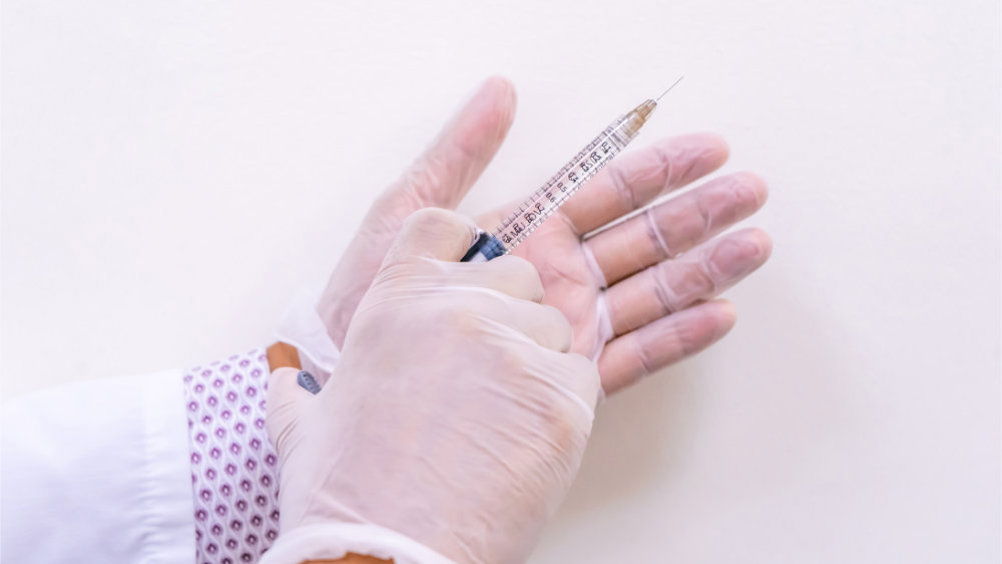

I would like to begin with reflecting and looking back. However, I believe we will not be doing too much of that once the licensing scheme is established. Let me introduce myself: my name is Dawn Knight, and since I had a cosmetic procedure that did not go to plan in 2012, I have been campaigning for better patient protection and changes in legislation in the UK cosmetic and aesthetic sectors since then.
The realisation of how little protection actually exists for members of the public who are in a similar (or worse) position than I was provided all the inspiration, drive and determination that I needed. Remember the 2013 Keogh report, which produced multiple recommendations that sought to improve and protect members of the public who undertake medical cosmetic procedures. However, since that time, successive Governments have lacked the appetite required to tackle the burgeoning challenges associated with the ever-growing cosmetic surgery and non-surgical aesthetics sector in the UK. At the time, I recall the cries that the Keogh report ‘was the taking of the lid off Pandora's box’, and how bad things might become before assertive action was taken to protect members of the public from procedures undertaken by unregulated, untrained and inexperienced practitioners. I would advise anyone to go back and review Keogh's findings and recommendations. I did just that in preparation for this article, and I was shocked to see that much of what was predicted at that time is so very evident today. Thank you to all those that contributed to the Keogh report (2013), you were right, and, sadly, your predictions have materialised. So, now is the time for change.
My concerns also extend to the proliferation of social media activity across a range of channels, which has led to a ‘boom’ in the range and type of non-surgical treatments on offer, and the flood gates have opened for those who either seek to train others or perform them. This has led to some describing this as how the ‘Wild West’ was born.
My journey so far
In 2014, I reached out to my local MP, Kevan Jones, and met with him. I have to say that Kevan was appalled by the lack of regulation and the risk that untrained or inappropriately trained practitioners presented to members of the public. As they say, the rest is history. Campaigning shoulder to shoulder with Kevan has been a source of constant support to me and has empowered very strong patient voices. Along with other MPs, he assured me that he would continue until regulatory change was achieved. True to his word, we still campaign today.
In 2016, I was asked to be the patient representative for the Northumbria University Level 7 postgraduate and Masters in Aesthetics, alongside a range of professional colleagues. It was then that I was introduced to Professor David Sines and joined with him and others to form the Joint Council for Cosmetic Practitioners (JCCP). I then became the Council's patient representative and was afforded the opportunity to campaign for patient safety and raise awareness of the need for regulatory reform.
The new licensing regime
The JCCP was formed and formally launched in 2018 at the House of Lords. Since that time, it has been an eventful journey. Characterised by both determination and courage, the JCCP has kept true to its stated mission to raise standards and protect the public. We eventually achieved our aim and were successful in working with other similar-minded organisations to convince the Government to agree to introduce a new system of mandatory licensing for the aesthetics sector in England. The JCCP partnered with the Chartered Institute of Environmental Health and 20 other organisations, including regulators and professional registers to back this call. This was no small achievement, and we truly place patient safety and public protection as priority actions. The new licensing regime forms an amendment that is now part of the Government's new Health and Care Bill, which will be enacted in July 2022.
» … all practitioners must possess robust indemnity cover that is fit for purpose, and insurance should only be provided to those practitioners who can evidence that they meet a minimum required standard of education, training and competence «
To achieve this objective, the JCCP needed someone to sponsor the proposed licensing amendment at both the committee and report stages of the Bill's reading in Parliament, and we were pleased that the Shadow Secretary for Health at the time, Justin Madders, agreed to do that. I recall a telephone conversation at the Clinical, Cosmetic and Regenerative (CCR) Exhibition last year with Justin where, during a 10-minute telephone call, I tried to explain why we needed a change in the law to introduce a new system of governance for the aesthetic sector in England. With Justin's support, the amendment moved from the committee to the floor of the House of Commons. Thereafter, the amendment moved on to the House of Lords committee and report stage, being withdrawn at each stage, as both expected and agreed, while the Government worked behind the scenes to introduce their own amendment to achieve our patient safety objective. Then, in February, the Government published their own version of the proposed amendment, and here we are today. Without the cross-party support from ministers, MPs and peers, this would never have been achieved. I was proud and honoured to play my part in the briefing of peers ahead of the first reading of the amendment in the House of Lords. Affirmation day is 1 July 2022, and then the real work begins.
If I said that it has taken thousands of hours of meetings and conversations across so many organisations to make this happen, I would not be exaggerating. Driving it all has been a concerted and declared drive for change that is robust, future-proofed and protects members of the public, as well as the integrity of a sector being debased by the cowboys camping out in the Wild West. Well, here we are, and enough is enough.
What the licensing scheme may look like
So, what could this licensing look like? First, it is important to state that a period of national consultation must begin, and this will be led by the Government. There is a lot to be decided, not least of which relates to the need to achieve the below.
A mandatory education and training standard
One agreed upon and nationally enforced mandatory education and training standard that is critical to ensure public protection. This does not exist today. In my opinion, the JCCP and Cosmetic Practice Standards Authority (CPSA)'s recognised competency standards should be the minimum to be accepted if members of the public are to be kept safe. Any dilution of that standard will not provide protection for anyone. One thing is for sure: the standard should not be a 1-day continuing professional development (CPD) training course in the injection of botulinum toxin or dermal fillers! The public has no way of assuring practitioner competency and, often, when presented with someone in a white tunic, they rarely ask important questions about the practitioner's education and training. Remember the saying ‘they do not know what they do not know’. Licensing would guarantee an accepted standard of competency and education, supported by evidence of further knowledge and continued professional development.

Regulation of dermal fillers
The second and third key issues relate to insurance and the regulation of dermal fillers. In April 2019, I also recall that, when I asked the then Parliamentary Under-Secretary of State at the Department of Health and Social Care, Jackie Doyle-Price, what the Government's stance on insurance for those performing aesthetic procedures was, she replied as follows:
‘All regulated healthcare professionals are required to have in place an indemnity arrangement which provides appropriate cover for their practice. The cover can be an insurance policy, an indemnity arrangement or a combination of both. The Department has recently consulted on appropriate clinical negligence cover for all regulated healthcare practitioners. The responses are being analysed and a response will be issued in due course. There are no plans to introduce a requirement for indemnity arrangements in relation to the provision of aesthetic procedures by non-regulated healthcare professionals’.
In my opinion, all practitioners must possess robust indemnity cover that is fit for purpose, and insurance should only be provided to those practitioners who can evidence that they meet a minimum required standard of education, training and competence.
Jackie also advised that ‘currently, a dermal filler may be regulated either as a general product, a medicine or a medical device, depending on its composition and intended use. From May 2020, all dermal fillers, irrespective of their composition and intended use, will be regulated as medical devices under Annex XVI of the Medical Device Regulations (EU 2017/745). The regulation will significantly strengthen the quality assurance and safety of dermal fillers and ensure a consistent legal status of these products on the UK market. This will lead to stronger market surveillance of these products’.
Reporting adverse events and complications
There is also an urgent need to introduce a more effective and inclusive approach to reporting adverse events and complications. While we already have the national ‘yellow card’ reporting scheme through the Medicines and Healthcare products Regulatory Agency (MHRA), I feel that this route is not well known and is not promoted among non-healthcare practitioners. In my opinion, I would like to see an aesthetics reporting route that separates the use of medicines and devices that are used for aesthetics only, as, too often we struggle to find trends in data that could alert us to an emergent issue. I believe that the yellow card scheme needs updating and reforming to keep up with the ever-changing sector and treatments that are on offer. Licensing will also give the public a much-needed route for redress, which is only available to them now if they receive their treatments with a registered healthcare professional. So, what about everyone else who is practising? At present, there are very few opportunities for members of the public to have access to redress schemes when things go wrong.
Prescribing
Next, let us talk about prescribing. There is a major issue with prescribing in the sector, particularly in regard to the remote prescribing of prescription-only medicines to non-healthcare practitioners, such as beauty therapists. So, my hope for licensing is that there will be a robust system of regulation that requires ethical prescribing and removes the right of those prescribers who elect to behave irresponsibly with their prescription pads for financial gain to continue with such unsafe practices.
Transparent communication and information
The license will also place responsibility on practitioners to receive information on the benefits and risks associated with their treatment choices. Unfortunately, members of the public do not always receive all the information that they need when seeking out treatment, including risks and ongoing costs. So, a clear, transparent way of relaying all the information that they need to make an informed decision about having or not having the treatment should be provided at the time of the first consultation. Too often, when things go wrong, members of the public are faced with an awful realisation: they were uninformed about the treatment they were undertaking. That must change.
Premises
Licensing would also require a premises standard to be met. Receiving a treatment in a garden shed or in the back of a hardware store needs to stop. Moreover, there must be standards for infection control, hygiene and public safety. So, the licensing application would include a premises inspection. Therefore, everyone should begin to prepare to meet the standards and make any necessary changes.
Raising awareness
A campaign is needed to raise awareness around the new licensing scheme, so members of the public know exactly what to expect and that they can question and report if they feel that a service falls short of the new national standard.
The supply and use of products, medicines and devices
There must be an oversight on the supply and use of products, medicines and devices used within the sector. It is apparent that the sector is imbued with the supply of unlicensed botulinum toxins (some of which are publicly being offered to learners who are attending short training courses and sold directly to the public via social media). There is also a need for the MHRA to make dermal fillers prescription-only devices.
Advertising standards
Finally, anyone who knows me will be aware that I have a major issue with predatory, coercive and grooming advertising on social media. I am now working closely with the Advertising Standards Authority (ASA) and Committees of Advertising Practice (CAP) to seek a change in regulation through the new Parliamentary Online Harms Bill (and other pieces of legislation) to tackle the issue of predatory, illegal and frankly abhorrent advertisements that are seen every day. These combine to produce a significant patient safety issue. Tighter controls and penalties are required for those who breach advertising standards and for those who use misleading claims and cite exaggerated outcomes. Examples of illegal advertisements include: ‘Advertisements for BOTOX©’ and ‘Hyaluronidase dissolve and refill’ or the advertisement of ‘Vitamin B12 injections/infusions’ on social media websites. These all breach ASA rule 12.12 and CAP rule 12.18 and constitute ‘illegal adverting’.
Conclusion
There will be many other issues and challenges to be considered outside of this opinion piece, and there is a mountain to climb to achieve a fully enforceable licensing scheme that will be robust, future-proofed and capable to move to accommodate and adjust to the swift changes in the types of aesthetic treatments (and their associated benefits and risks) within the sector. The hard work for licensing starts now.
There will be some who will easily meet the licensing standard, which is just what I hope for and expect. However, there will be others who will need to make changes, complete additional learning and review and reflect on their working practice to raise standards. There will also be some who will not make the grade. I cannot say much more than the fact that history will look back upon this time of variable (and, sometimes, unsafe) practice. For those ‘rogue’ practitioners who presently ride the wave of no standards or regulation, the time has come for purposeful reflection. Patient safety and public protection must come first every time.



